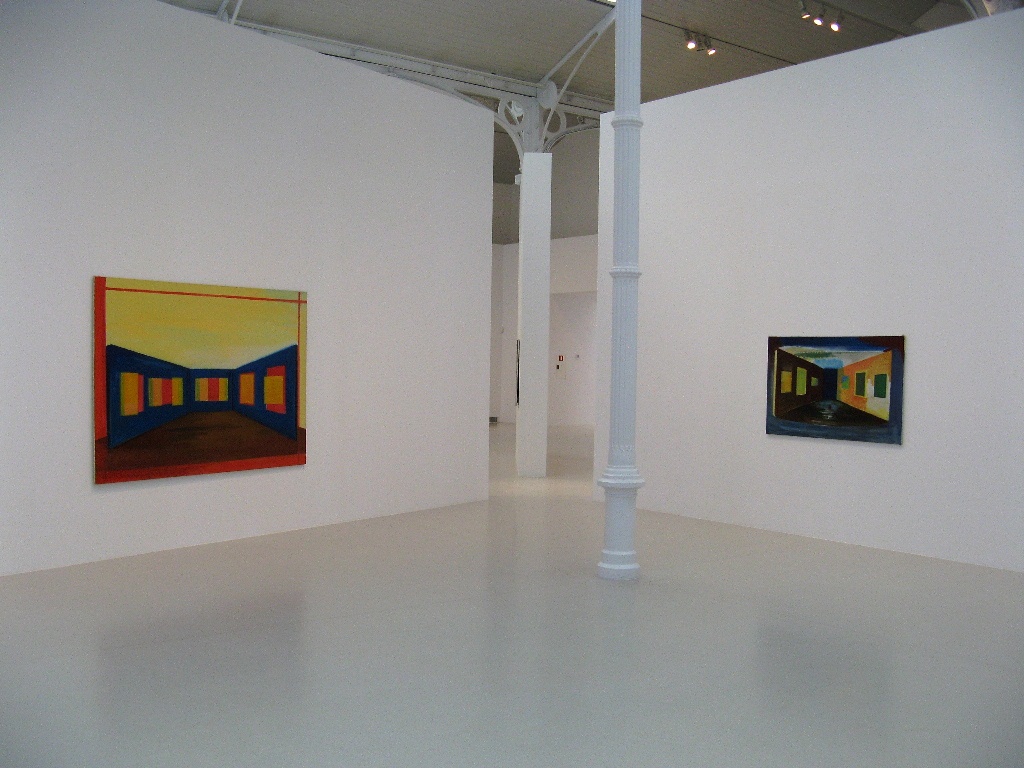
Vélazquez-Daniëls-Mik-Nuur A Spanish-Dutch Group Portrait

Let’s call it the ‘zebra’ index: the nature of the people of a country measured by how much attention they pay to pedestrian lights. Here, the Spanish and the Dutch have something in common: they still cross when the light is red.
My claim for the day: in countries with a high zebra index, there is a lack of trust in the authority of government.
This may sound like a ‘Stapeltje’ (after the discredited Dutch social psychology professor who pulled research and conclusions out of thin air), but I think there is something to it.
At the Prado, I see Velázquez’ Las Meninas, one of the strangest group portraits in the history of art. It shows the king and his spouse as patrons and Maecenas, playing an extra role in the theatrical piece that the painter set up for himself. Velázquez stands pontifically at the centre, with a few other disciples of the royal pair in front of him. The little ones (the royal couple’s child, some servants and a Lilliputian) have literally been made large.
The painting radically upended the prevailing power relationships, showing that true authority lies not with the reigning powers, even when they, as in Velázquez’s case, were prepared to pay well for the painter’s services. This means that you can not only call this painting ‘disobedient’, but also a form of anti-capitalist art avant la lettre.
A comparable picture arises at the handsome exhibition by Aernout Mik at CA2M. Mik is the ideal chronicler of the Dutch jaywalker, crossing against the lights, which is not to say that he is such a one himself. Like every Dutchman, Mik’s actors decide for themselves when it is safe to cross the road.
His stories are about a country – i.e. a world – that has trouble with authority. ‘Trouble’ is not to say that it is no longer there at all, more that the quest for expressing authority has become a continuous wrestling with would-be kindred beings. It is a game of recognizing and rejecting authority, a rebellion of the slightly undermining kind.
People cluster for Aernout Mik, pushing and shoving as if there were nothing they would rather be doing. In his most recent work being shown in Madrid, Schoolyard (2009), security agents at a vocational school courageously try to keep order, only to end up leading the hordes of pupils and teachers into total chaos.
After the Mik exhibition, I go to the René Daniëls show at a Reina Sofia museum annex. There is a similar message here as well. The artist is praised for his ‘anti-establishment stance’, but is ‘far from reactionary’, concerned with ‘questioning our conceptions of reality’. So Daniëls too is civilly disobedient.
In this beautiful exhibition the work of Daniëls is pictured from his punk-mentality, showing how he broke with the conventions in the art of his day (the early eigthies).
Also Navid Nuur, the third of the principal guests at the ARCO Focus The Netherlands-extramural programme, is radiant, in his case at the Matedoro cultural centre. Where the modernist tradition put its faith in order and regularity in an attempt to imbue art with Enlightenment ideals, Nuur is far less serious about it all. His spirit is playful and forever recalcitrant.
In Madrid, Nuur makes himself known as a Don Quichot-like warrior against blackness, which you could see as the ultimate enemy of art. Despite the blustering darkness at Matedoro, it is an optimistic exhibition. Nuur reveals himself to be a consummate reflector, lighting up brilliantly at the faintest or tiniest ray of light, thereby giving art a role even in these dark times.
From the perspective of civil disobedience these three Dutch artists have more in common with Velázquez than you would think at first sight. It might also make one think it is general practice among artists. When I go over the ARCO fair a little later I realise once more how special it really is.
Aernout Mik
CA2M, Madrid
8 Ffebruary – 6 June
René Daniëls
Palacio de Velázquez, Parque del Retiro
Madrid
2 October – 26 March
Navid Nuur
Matadero, Madrid
20 February – 8 April
Domeniek Ruyters


